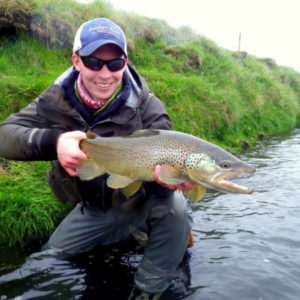Salmon fishing in Norway has a rich history amongst British fishermen, a destination visited by numerous anglers since the 19th century. These early, wealthy, travellers, named the Lakse Lordes (Salmon Lords), kickstarted a trend that is now followed by a much wider audience in the modern day. Even today, anglers visit the same rivers and farms that those original salmon tourists visited. The walls of these historic houses are littered with decades of salmon memorabilia.
Whilst I am not sure I can quite claim a family link all the way back to those early salmon pioneers, my grandfather did frequently visit the Nordic rivers in search of silver. Despite never meeting him and salmon fishing somewhat skipping a generation with my father, my interest was sparked as a boy by a wooden carving of a 32lb salmon landed by my grandfather from the Stjørdal River… the fish was bigger than me.
Time passed and I earnt my salmon stripes, countless hours on my home rivers in England, Wales and Scotland with intermittent success. Spreading my wings, I chased silver in the rivers and streams of Iceland. Despite the successes found in these locations, the wooden carving remained alluring, and I decided to start my Norwegian salmon fishing journey.
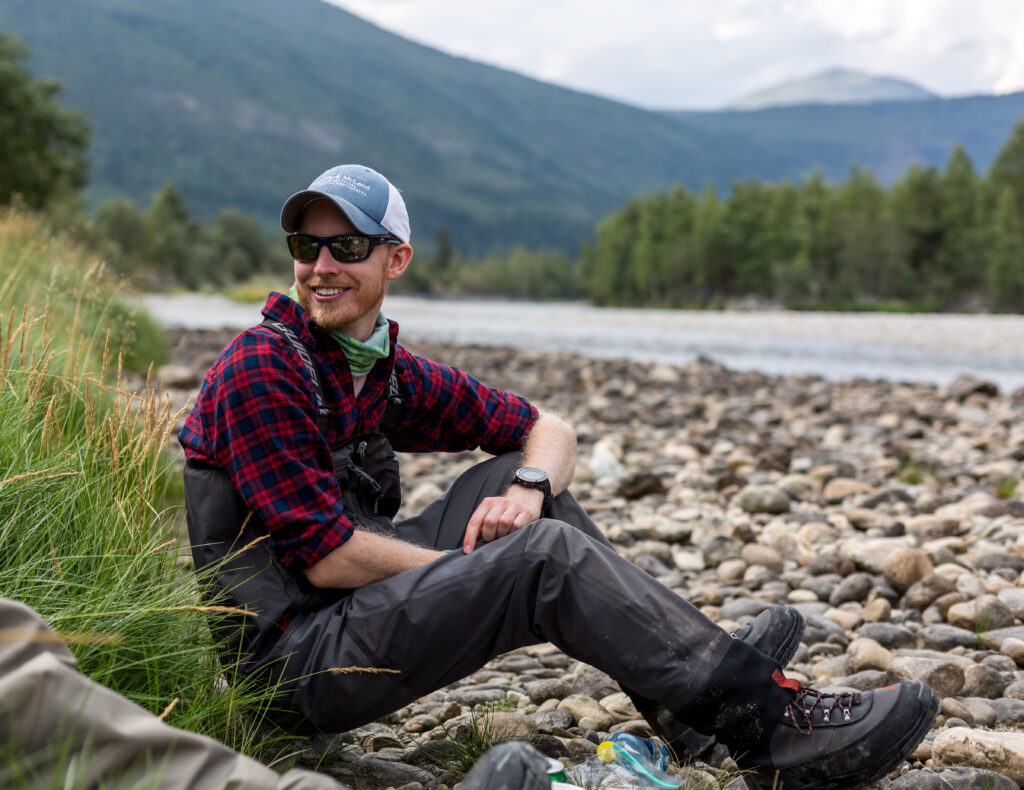
This journey took me to the Trondheim Fjord, just like the salmon from the carving, but to a special river lying just to the south of Stjørdal called the Gaula. For many, this river needs little introduction, it is one of the best Atlantic salmon rivers in not only Norway but the world. Travelling along the river it is easy to see what draws salmon and anglers to this valley; pacey flows, stunning pools and a river free from man-made barriers.
Since my first cast into the middle reaches of the Gaula, the river has captured my heart. I have returned on numerous occasions and witnessed the river in all sorts of conditions, yet have always loved my days on the water. Atlantic salmon are infuriating and those of the Gaula are certainly no different – your success is largely down to the conditions but also the mood of the fish!
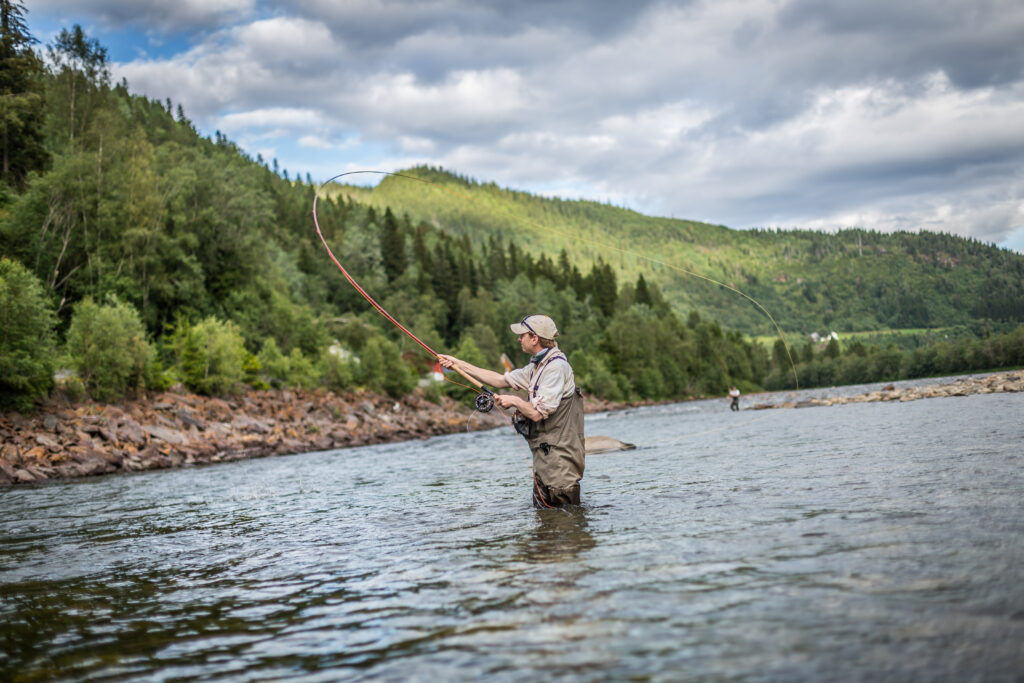
Over the years, my trips to Norway have taught me much about salmon fly fishing. Whilst it is a country famed for large and aggressive Atlantic salmon, shooting heads, and big Templedog tube flies, I have found that for regular success you need to be able to adapt and think a little outside the box.
In the early season and high water, it is unquestionable that the bigger flies and standard approach provide the greatest successes, but away from that different tactics can pay dividends. When I am salmon fishing, I am constantly thinking about my approach, method and fly selection. I attribute this thought process to the fact I came to salmon from trout fishing, where if you are not catching then you need to make a change. This is not always the case with their silver relatives, but it is a process that has brought me success over time.

When looking at a big salmon pool and then into one’s fly box, it is hard to fathom how a fish could not only notice your fly but feel a desire to chase it down in all that water. There is also much spoken about irritating the salmon into grabbing a fly, but I think this statement can often take our thought process down the wrong avenue.
A better way to look at it is, what would the salmon think about eating? I know they cannot eat once they return to freshwater, but there must still be that instinct present. A freshly returning salmon will have a recent memory of its ocean diet of small fish and krill and therefore might be tempted by a larger fly. However, as a fish stays in the river longer, that instinct possibly moves towards the original diet as a parr of small river invertebrates. Working along these lines, and the fact that the salmon have exceptional eyesight will unlock a whole side of your fly box of smaller offerings.
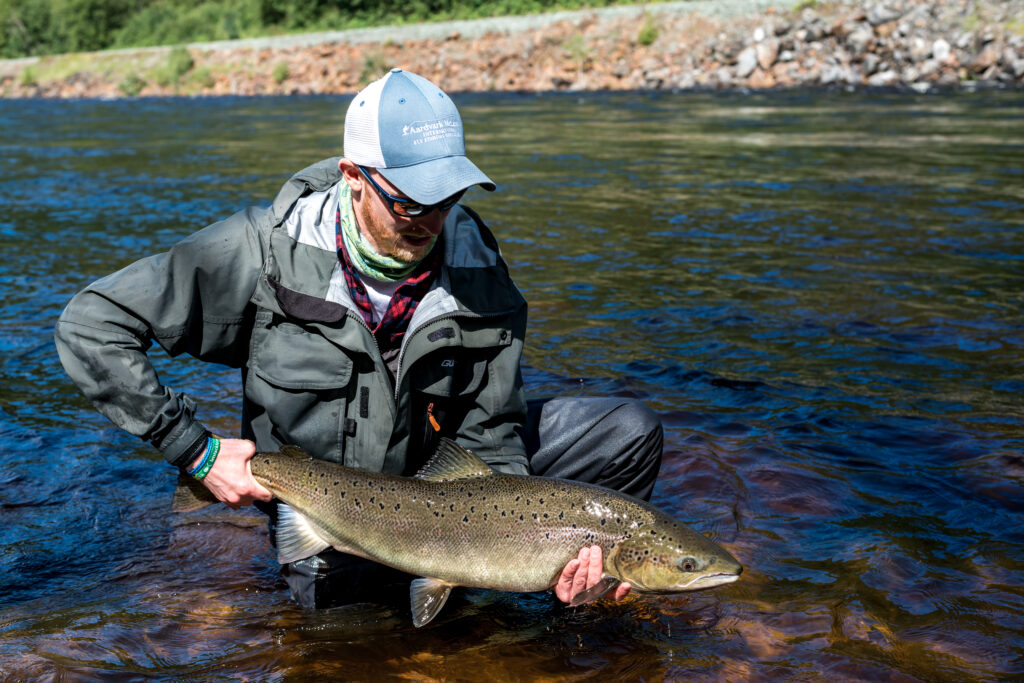
I, like so many, was reluctant to move to smaller flies to begin with but following success in Iceland where it is a standard approach, I was buoyed to try it. Sure enough, it is these smaller flies that have brought me the greatest success, particularly in clearer water and during the daytime fishing sessions. Nowadays, these smaller flies with hardly any wing are nearly always first choice.
Sticking with the Icelandic influence, once I was convinced that smaller flies worked, when tough lower water conditions prevailed and little else was working, I switched to try hitch tubes. This change up again brought about great success, although not always the best hookup ratio as so often the fish misses the fly, or it just catches right on the edge of the mouth. Incredibly exciting nonetheless!
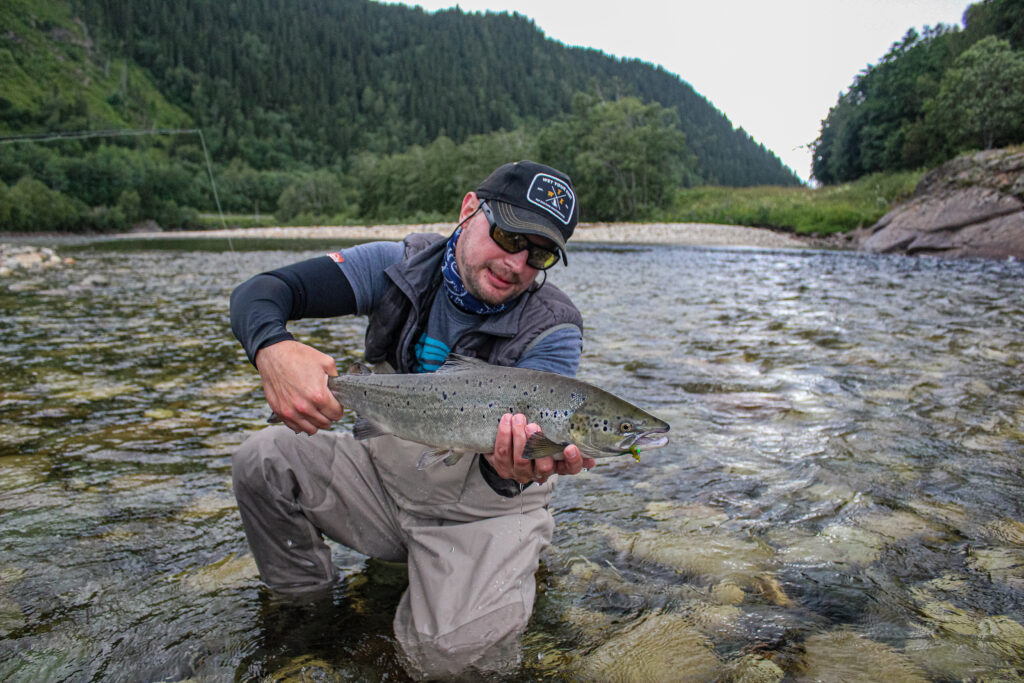
I find water selection to be key for hitching, not necessarily the middle and lower parts of the pool where the hitch looks fantastic on the flat surface but, rather the faster choppy necks and upper middle parts of the pool. Firstly, in the lower water the fish nudge into these areas for the increase in oxygen, but I think the main reason is that the fish do not see the hitch until the last moment, and they simply react instinctively to it. I will be forever haunted by a big silver salmon rolling through the choppy water on my hitch and waiting for the tug of line that never came… It is a sight I can never scrub from my memory, not the biggest salmon to ever run the Gaula but would certainly have been one to cherish.
Fly selection and line choice are obvious things that can be chopped and changed in the search for silver. That said, I think something that is far more important is consistent presentation, knowing your limitations and in turn understanding salmon lies.
When I approach a salmon pool, I make a plan as to where the fish might be sitting, how the current will affect the swing and how I want the fly to appear to the fish. That does not mean casting as far as I can every cast at 45 degrees and taking two steps each time, but rather changing the length and angle of the cast as I work through the pool. In Norway, and especially on the Gaula, speed on the fly is key so casting squarer across the river can be very effective.
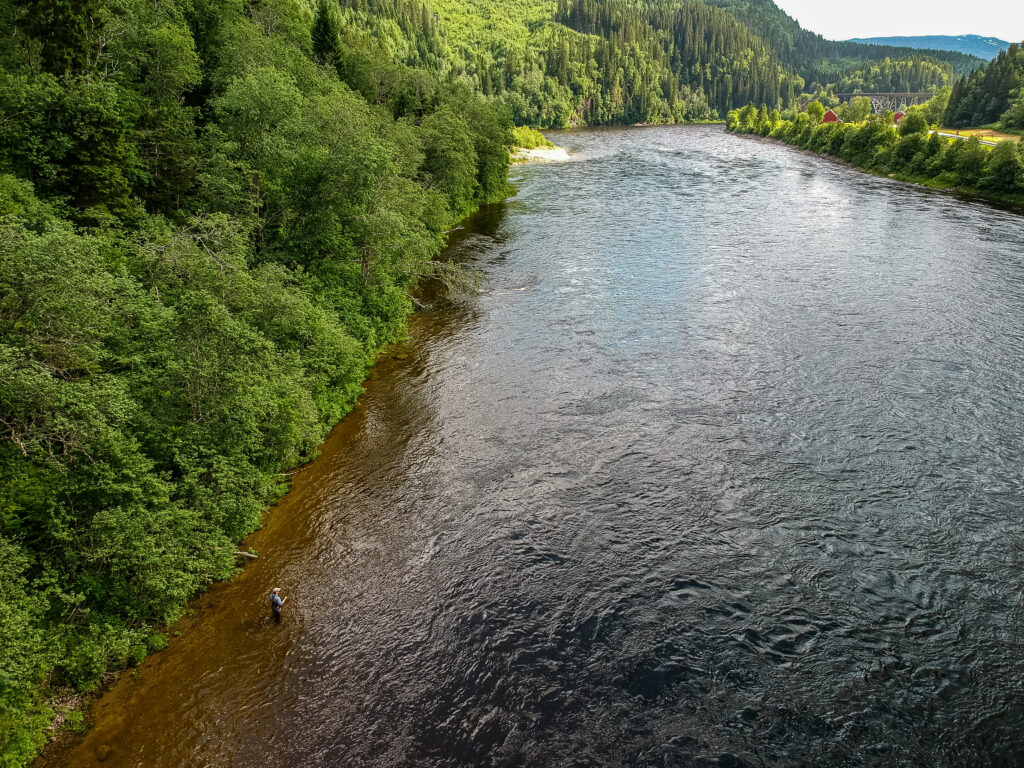
The best salmon holding area may be on the other bank but it may not always be possible to target these areas due to your own ability or the limitations of the tackle you are using. That does not mean you do not stand a chance, simply look at the pool and identify areas within your reach where fish may hold, mid river structures, current changes and so on. In my experience, consistently presenting a fly well at these spots is far more productive than a poorly presented effort at range. The knock on effect is that you will have less tangles and spend more time fishing.
Whilst I am a huge advocate for changing tactics when salmon fishing, it is vitally important that you are sensible as to when you make your changes. When trout fishing, I have been known to change flies every other cast at times, but with salmon a more patient approach is required. Unless it is necessary to make an adjustment midway through a pool due to a change of depth or flow, I will typically fish through the whole run with the same setup in order to give my choice a full try. Once completed then I will think about a change. That could be a fly or line change, or simply a change of angle such as fishing from the other bank.

I also like to change setup due to light conditions and water clarity, so will often change over the course of the day as a result of the brightness or from day to day as water conditions fluctuate. I have found that altering fly size and colour for different conditions can result in success.
As with most things in salmon fly fishing, so much of it is theory and guesswork. Are we just trying to put method to the madness of it… possibly, but I like to think that by applying those extra thought processes my success rate has increased. Hopefully next season I too will be able to have a salmon like the one in that carving that first inspired me on this journey.
For more information on salmon fishing in Norway please contact Alex Jardine or call our office on +44(0)1980 847389.

